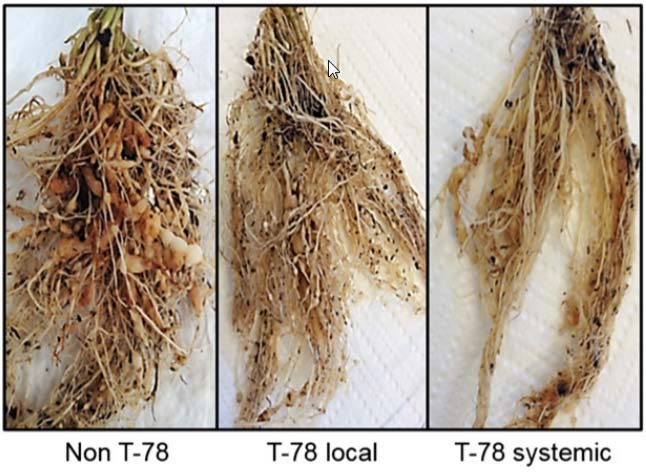Endophytic Trichoderma Protects Tomato Plants Against Nematodes
One major enemy of tomato plants is the nematode Meloidogyne incognita. This pest infests the roots of the plant, inducing the formation of a gall where the nematodes lives protected from other predators while draining energy and nutrients from its host.

One major enemy of tomato plants is the nematode Meloidogyne incognita. This pest infests the roots of the plant, inducing the formation of a gall where the nematodes lives protected from other predators while draining energy and nutrients from its host. Tomato plants combat these enemies by producing toxins to deter or kill them. Scientists have known that endophytic root endosymbionts from the genus Trichoderma seem to enhance the plant’s ability to fight infection, however the mechanism it operates with has remained elusive until recently.
This month, German scientists published a paper in The New Phytologist revealing some of the metabolic details of this symbioses. They confirmed that Trichoderma is beneficial to tomato plants by examining plants with and without endophytes each growing with their roots split between to pots of soil (figure 1). This allowed them to expose each individual to environments with and without the nematodes to verify the advantage of endophytic infection (figure 2).

They also used these experimental plants to investigate the genetic pathways that manage the plants internal defenses against nematodes. They discovered that
strengthens the tomato plants’ defenses by ‘priming’ their hormonal defenses to be more reactive to infection. Before infection, Trichoderma enhances salicylic acid – regulated tomato defenses to resist nematode establishment. Once the plants are colonized by the pests, the root endophytes improve the plant’s ability to mitigate their negative effects by priming the jasmonic acid – regulated defense pathways. The researchers hope to use this knowledge to develop new systemic or topical inoculants that can help tomato cops fight harmful soil nematodes.
Sources:
- Martinez-Medina, A., I. Fernandez, G.B. Lok, M.J. Pozo, C.M.J. Pieterse, and S.C.M. Van Wees. 2016. Shifting from priming of salicylic acid – to jasmonic acid – regulated defenses by Trichoderma protects tomato plants against the root knot nematode Meloidogyne incognita. The New Phytologist. DOI:10.1111/nph.14251.
- Phys.org. Tomato plants are more resistant against nematodes when colonized by a fungus. Article. Accessed November 17, 2016.



 Print
Print Email
Email



